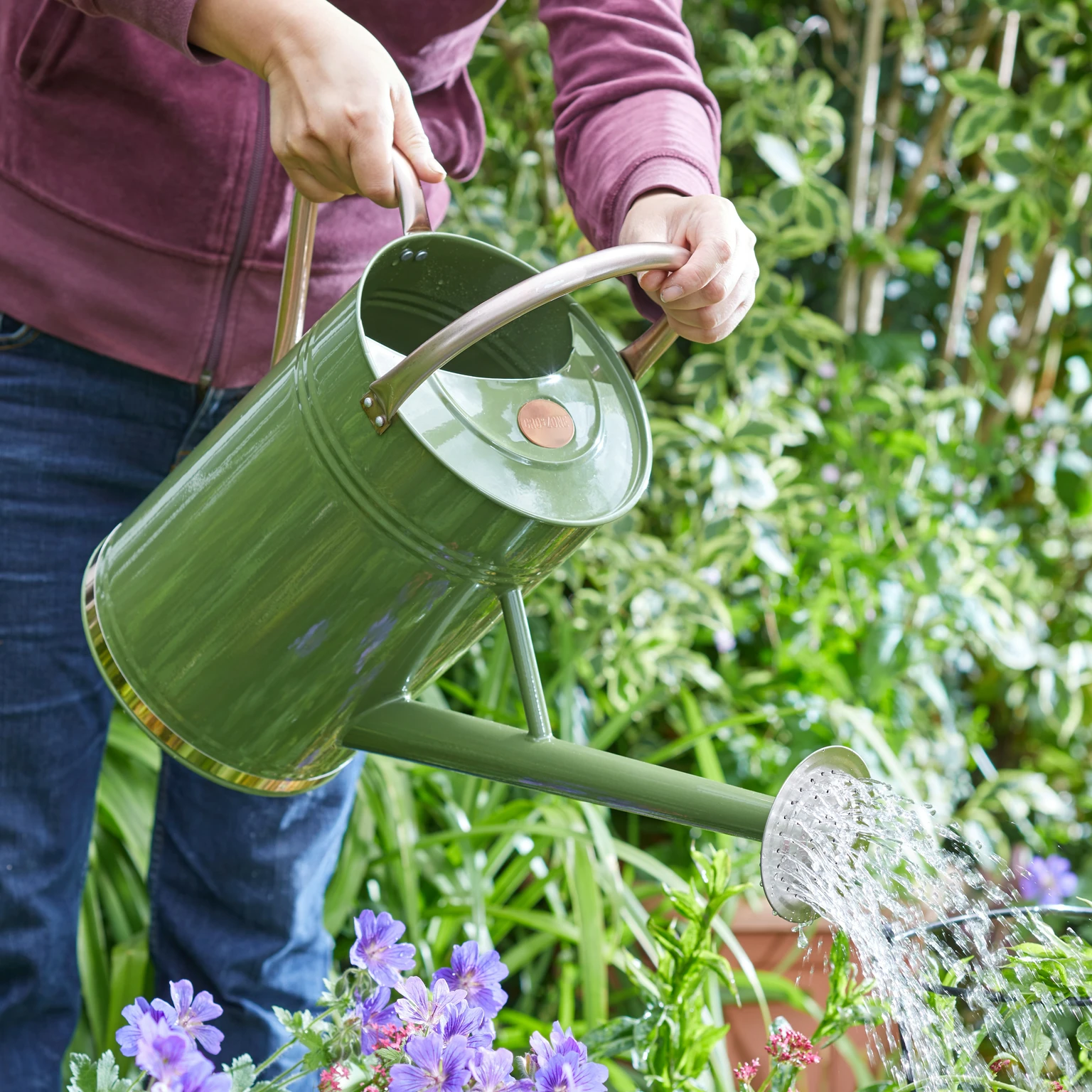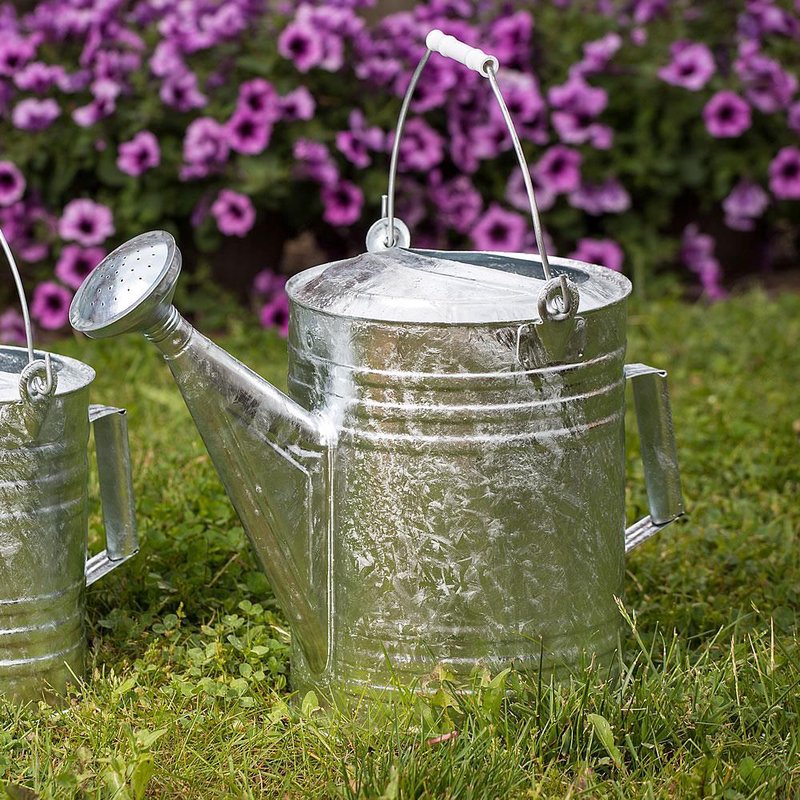
The Right Large Watering Can: A Buyer’s Guide
Types of Large Watering Cans
Choosing the right large watering can is crucial. Different types serve different needs. Let’s explore the common varieties available.
Plastic Watering Cans
Plastic large watering cans are lightweight. They are great for those who prefer ease of carrying. They resist rust, making them perfect for outdoor use.
Metal Watering Cans
Metal large watering cans are sturdy. They last longer and withstand harsh use. Often, they have a traditional look that some gardeners prefer.
Galvanized Steel Cans
Galvanized steel large watering cans are highly durable. They handle heavy-duty watering tasks with ease. They are designed to prevent rust, adding to their longevity.
Stainless Steel Cans
Stainless steel large watering cans offer a modern look. They are strong and resist corrosion. These are suitable for gardeners seeking a balance of form and function.
Collapsible Watering Cans
Collapsible large watering cans save space. They are ideal for gardeners with limited storage. These are usually made from flexible materials like silicone.
Decorative Watering Cans
Decorative large watering cans often serve a dual purpose. They water plants and add aesthetic value to the garden space. These cans might be hand-painted or designed with unique shapes.
Selecting the right type of large watering can depends on individual needs. Consider the weight, durability, and aesthetic preferences before making a choice.
Key Features to Consider
When shopping for a large watering can, key features should guide your decision. Here’s what to look for:
Spout Length and Design
Spout design affects watering precision. A long spout reaches plants easily. This is vital for watering in large gardens.
Handle Comfort and Grip
Your comfort matters. Look for a can with an ergonomic handle. It should allow a firm, comfortable grip during use.
Balance and Weight Distribution
A well-balanced large watering can prevents strain. It should feel stable and easy to carry when full. Check its weight when empty and imagine it when filled.
Watering Control and Flow Rate
Control is key for proper plant care. Opt for cans with adjustable flow rate for different plants’ needs. Nozzles should provide even distribution of water.
Durability
Invest in a durable large watering can to avoid frequent replacements. Assess the build quality and material to predict its lifespan.
Filling Ease
Consider the opening size. A wide mouth makes filling the can simpler and helps avoid spills.
Prioritize these features to find a large watering can that serves you best. Durability, balance, and comfort in handling are essential for gardening efficiency.
Benefits of Using Large Watering Cans
The use of a large watering can presents several benefits for the avid gardener. Some of these advantages include:
Enhanced Water Conservation
A large watering can assist in reducing water waste. It allows for targeted watering, ensuring that water goes directly to the plants’ roots where it’s needed most.
Time Savings
With a large watering can, gardeners can water more plants in one go. This means less time refilling and more time tending to other gardening tasks.
Reduced Physical Strain
Carrying water in small batches can be hard on the body. A large size means fewer trips, minimizing the strain on your back and arms.
Better for Established Gardens
For gardens with many plants or larger areas, a large watering can is ideal. It holds enough water to cover the area without needing a hose or multiple refills.
Consistent Water Delivery
Thanks to adjustable nozzles and fine rose attachments, large watering cans provide a gentle and steady stream. This helps to mimic natural rainfall and avoids disturbing delicate seedlings or soil.
Portability Convenience
Even with a large capacity, these cans are designed for easy transportation. They are perfect for gardens without a nearby water source.
Choosing a large watering can is about boosting efficiency, comfort, and the well-being of your plants. Keep these benefits in mind when you search for the perfect gardening companion.
Material Choices for Durability and Function
Choosing the right material for your can is vital. It affects both durability and how you’ll use your can. There’re a few options to consider.
Plastic
Plastic is a common choice for gardeners. It’s light and easy to carry around. Plus, no rust means it lasts a long time outdoors.
Metal
Metal gives a classic feel to your gardening tools. It’s heavy-duty and can take a lot of use. Just note, it may get heavy when full.
Galvanized Steel
This material stands up to the toughest tasks. Galvanized steel fights off rust and handles years of gardening with ease.
Stainless Steel
Stainless steel is a stylish pick. It’s tough against corrosion and keeps its shine over time. Gardeners love its perfect mix of looks and strength.
Silicone
Silicone is for those who value convenience. Collapsible cans made from this material are great space savers in tight spots.
The material you choose should match your garden’s needs. Think about the weight you can handle and how long you want your can to last. Keep in mind, durable materials like stainless steel or galvanized steel might cost more upfront but can save money down the road by avoiding replacements.
Ergonomic Design: Comfort in Handling
Choosing the right watering can isn’t just about its size or durability. Ergonomics play a crucial role too. A well-designed handle and can shape can make all the difference in how comfortable the can is to use, especially when filled to capacity. When picking out a can, consider the following ergonomic features:
Handle Comfort and Grip
An ergonomic handle is designed to fit comfortably in your hand. This helps in reducing fatigue during prolonged use. Look for a handle with a soft grip or one that’s shaped to your hand’s curve for added comfort.
Can Balance
A can that’s well-balanced feels steadier and lighter, making it easier to carry. When selecting a can, make sure it feels stable in your hand, and the weight is distributed evenly when it’s full.
Lightweight Materials
While metal cans are durable, they can be heavy. Consider a plastic or silicone large watering can for a lighter option. Remember, the lighter the can, the less strain on your arms and back.
User-Friendly Shape
Some cans come with a curved design that makes pouring water easier. This helps to reduce the effort needed to tilt the can to water plants.
Ergonomic design enhances your gardening experience. It lets you focus on the joy of gardening, rather than the discomfort that can come with using an ill-fitting tool. Keep ergonomics in mind to find a large watering can that’s a joy to use every time.
Capacity and Size Variations
When picking a [large watering can], consider its size. This is key to meeting your garden’s needs. Sizes vary, so choose wisely based on how much water you need to carry. Here’s what to think about when looking at size variations:
Look at the Volume
Volume is your starting point. Standard large cans hold between 2 to 3 gallons. This is enough for most garden tasks.
Match to Garden Size
The size of your can should match your garden size. For big gardens, you need a can with more capacity.
Consider Plant Types
Different plants need different amounts of water. Make sure your can’s size suits the plants you have.
Think About Storage
Storage space is often limited. Make sure your choice fits in your shed or garage.
Check Watering Frequency
More plants or dry climate? You might need a bigger can to cut down on refilling trips.
Finding the right capacity in a large watering can helps manage your garden effectively. It ensures that you’re not overworking yourself with too frequent refills. It also makes sure you can handle the weight when it’s full. Choose one that fits your physical ability and gardening needs to foster healthy plants and a happy back.
Accessories and Attachments for Efficient Watering
Enhancing your large watering can with the right accessories can make watering even more efficient. Here are some key attachments and accessories to consider:
Nozzles and Roses
Interchangeable nozzles or roses adjust the water flow. They provide a gentle shower for delicate plants or a steady stream for deep watering.
Water Level Indicator
Some cans have a clear strip or an indicator. This feature lets you see the water level, so you avoid overfilling.
Filters
Built-in filters keep debris out. They prevent clogs in the spout, ensuring a consistent flow.
Handles and Straps
Additional handles or carrying straps spread the weight. They make it easier to carry the can, especially when full.
Measuring Markings
Markings on the side help you mix fertilizers or pesticides accurately. You can see exactly how much water you’re using.
Detachable Spouts
Some watering cans boast a detachable spout. This is great for easy storage or for different watering needs.
When shopping for a large watering can, think about these handy extras. They boost the watering can’s versatility and your watering precision. Less time adjusting water flow means more time enjoying your garden.
Maintenance and Care Tips
Proper maintenance of your large watering can extends its life and functionality. Here’s how to keep it in top shape:
Cleaning
After use, rinse your can to remove dirt and debris. A clean can prevents mold and clogs within the spout.
Storage
Store your can in a cool, dry place. Keeping it out of harsh weather prevents damage and wear.
Inspection
Check for leaks or rust regularly. Fix small issues before they become bigger problems.
Handle Care
Ensure the handle stays tight and secure. Tighten any loose parts to avoid accidents while carrying.
Spout Maintenance
Remove the nozzle and clean it to ensure a clear water flow. A blocked spout can hinder your watering efficiency.
Follow these simple care tips to keep your large watering can ready for any task. Regular upkeep saves time and money in the long run.


